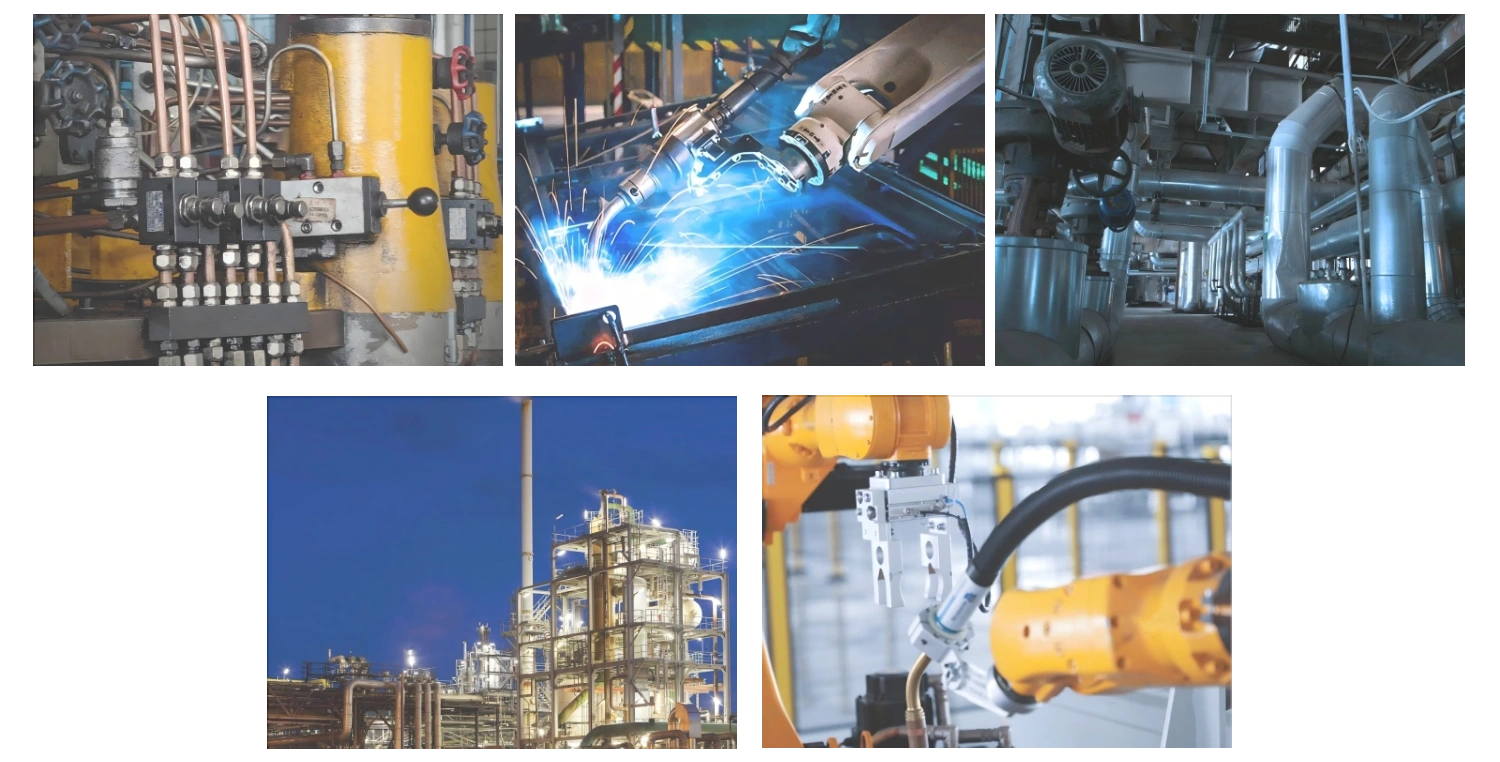Key Stages in Rubber Parts Manufacturing
Material Selection for Rubber Components
Getting the right kind of rubber matters a lot when making rubber parts because it affects how well they work and how long they last. When manufacturers pick between natural and synthetic rubber, they look at what the part needs to do. Natural rubber works great for things around the house since it holds up pretty well over time, but it melts away quickly if exposed to high temperatures. Synthetic options stand up better against heat and chemicals though, which makes them the go to choice for factory settings where conditions are harsher. Most experienced folks in the field will tell anyone listening that factors like firmness, stretchiness, and ability to handle extreme temps really determine what kind of rubber gets used. Choosing wrong isn't just about wasted materials either. Products made with improper rubber can actually cause legal problems down the road, so companies need solid processes in place to make sure they're picking the best possible material for each job.
Compounding: Mixing Raw Rubber with Additives
Rubber compounding stands as one of the most critical steps in manufacturing, where raw rubber gets mixed with various additives to boost its properties. Carbon black is commonly added to make rubber stronger and more durable, whereas accelerators help speed things along during the curing phase. Getting the mix right takes real skill though. Most formulas will have roughly equal parts rubber base, filler materials, and those chemical agents that help vulcanize everything together. The rubber industry relies heavily on guidelines set by organizations like ASTM International to ensure products meet certain performance benchmarks. When manufacturers get this formula just right, it makes all the difference in producing rubber goods that actually perform as expected under real world conditions.
Molding Processes in Rubber Production
Molding remains one of the key processes when it comes to forming rubber components, and manufacturers typically rely on three main approaches: injection, compression, and transfer molding. Injection molding works best for large scale production because it cycles so fast, which makes it ideal for creating complicated shapes that would be difficult otherwise. Compression molding on the other hand tends to save money, especially for things like rubber seals or gaskets even though it takes longer to produce each item. Transfer molding sits somewhere between these two extremes, combining speed with accuracy since it cures materials faster while maintaining tight tolerances. Looking at actual practice in the rubber footwear sector shows why many producers choose injection molding machines specifically for their shoe manufacturing needs. These machines allow them to create detailed foot designs without generating much scrap material during production.
Vulcanization: Curing Rubber for Durability
Vulcanization really changes what rubber can do, boosting its stretchiness and toughness so products last much longer than they would otherwise. Manufacturers typically cure the rubber using different techniques like adding sulfur or even microwaves, which helps create materials that stand up better against daily wear and tear plus those hot or cold extremes we all know about. According to some industry data, properly vulcanized rubber components tend to last around 40% longer before needing replacement. For companies producing anything from tires to seals, getting this right means their goods actually perform under stress tests and real world conditions without falling apart after just a few months of use.
Post-Processing and Quality Control
After manufacturing, post processing steps and thorough quality checks become absolutely necessary if we want reliable and safe rubber goods. Trimming away extra bits and giving surfaces their final polish isn't just cosmetic work it matters a lot for parts that need precision fitments. When it comes to quality assurance, companies run all sorts of tests stress tests, compression checks, even accelerated aging experiments to spot any flaws early on. Manufacturers know all too well what happens when things slip through cracks: uneven textures or trapped air pockets inside the rubber can lead to product failure down the line. That's why serious producers invest heavily in their QC protocols. Good quality control doesn't just prevent disasters it builds trust with customers who expect their rubber components to perform exactly as promised year after year.
Common Rubber Molding Techniques
Rubber Injection Molding for Precision Parts
Rubber injection molding stands out as one of the key techniques when it comes to producing those really precise rubber components needed across various industries. Basically what happens here is the rubber gets heated until it reaches just the right consistency for injection into molds. This allows manufacturers to create intricate shapes and parts that meet strict dimensional requirements. One major benefit of this approach is how little waste it generates. Since most operations are automated these days, there's much better control over material consumption throughout the whole process. Plus, production runs tend to move along at a much quicker pace than traditional methods, which makes sense why so many companies turn to injection molding for their bulk orders. We've seen this reflected in recent market activity too, with growing interest from sectors ranging from automotive to medical devices looking for reliable, cost-effective solutions for their rubber needs.
Compression Molding for Industrial Applications
Compression molding remains a go-to process for making big rubber components across various industries. The basic approach? Put measured quantities of raw rubber into a mold cavity, then apply pressure while heating until the material takes on the desired form through curing. What makes this method stand out? Cost savings, especially when companies need to produce lots of parts at once since materials don't get wasted as much compared to other methods. According to what many manufacturers report, even though there's some initial setup involved, most find that compression molding pays off quickly thanks to faster production cycles and lower per-unit expenses. That's why we see it so often in places like auto factories and plants that manufacture heavy equipment where budget control matters just as much as quality standards.
Transfer Molding for Complex Geometries
When working with complicated shapes or parts that need inserts, transfer molding really shines in the world of rubber manufacturing. The basic idea is simple enough: rubber gets put into a pot first, then pushed through openings into the actual mold cavity. What makes this method special? Well, it handles those intricate designs much better than regular compression or injection methods would manage. Of course there are downsides too. Getting the material flow just right takes serious attention because otherwise all sorts of defects can happen. That's why we see so many applications across different sectors like electronics manufacturing and even aerospace engineering. These industries rely on transfer molding precisely because they need to embed tiny components within their products without compromising quality.
Machinery in Rubber Manufacturing
Rubber Injection Machinery Workflow
Rubber injection machines work through a series of steps that turn basic materials into finished rubber goods. First comes loading the raw rubber into the system, followed by heating it until it reaches a uniform consistency after mixing. Once ready, the softened material gets forced into molds at high pressure to produce those precise components needed across various industries. Modern tech has really transformed these operations though. Automated systems now handle much of the monitoring and adjustments during production runs, which means better quality control and faster turnaround times. Looking at real world applications, manufacturers who upgraded their equipment saw some impressive results. One factory boosted output by around 30 percent while cutting down on wasted material thanks to smarter workflows and those automated features we mentioned earlier.
Auto Rubber Gasket Cutting Systems
Rubber gasket cutting has gotten a major upgrade with automated systems that deliver amazing accuracy and faster production times. These machines work with computer controls so every single gasket comes out exactly as specified, which cuts down on mistakes that happen when people do the cutting manually. The real money saver comes from automation itself since factories need far fewer staff watching over the process. Many manufacturers who switched to these automated setups have seen their bottom lines improve quite a bit. Take one plant that replaced hand cutting with automation last year they slashed labor costs by almost 40% while doubling output rates. Now they can handle bigger orders without hiring extra hands, something that would have been impossible just a few years ago.
Rubber Compression Press Operations
Running rubber compression presses involves several key steps including initial setup, keeping temperatures and pressures at just the right levels during operation, plus regular maintenance work to keep everything running smoothly. Most experienced operators know that sticking to a schedule for checking equipment and making necessary adjustments is crucial for getting good results out of these machines over time. When manufacturers focus on getting their press operations right from day one, they tend to see real benefits down the road both in terms of what gets produced and how much can be made within a given timeframe. Take some factories we've worked with recently - those implementing new methods for managing their presses report longer lasting equipment and products that meet specifications consistently week after week. All this points to why spending time upfront on proper installation and ongoing care pays off big time in the long run.
Applications of Manufactured Rubber Parts
Automotive Seals and Gaskets Production
Rubber seals and gaskets are essential throughout cars and trucks, keeping everything watertight and working properly. These little rubber bits stop fluids from leaking out and shield internal parts from dirt, moisture, and other nasties that would otherwise ruin expensive components over time. Making good quality rubber parts requires following strict manufacturing rules. Most serious auto part makers stick to ISO/TS 16949 standards because they know what happens when corners get cut – bad batches end up in vehicles causing headaches later on. The market for these rubber parts keeps growing as more cars roll off assembly lines worldwide, plus there's always demand for replacements after years of wear and tear. Recent stats show the sector looking pretty healthy going forward too, especially since new materials keep coming onto the scene that make rubber last longer and perform better under tough conditions.
Rubber Shoe Sole Manufacturing Processes
Making rubber shoe soles requires thinking about things like what kind of materials work best and how complex the designs need to be for people's feet to actually feel good while walking around all day. Rubber has come a long way since Charles Goodyear discovered vulcanization back in the 1800s, which basically made rubber stop melting when it got hot and start being flexible instead. These days, companies use stuff like injection molding machines that can pump out thousands of detailed sole patterns every hour. The improvements aren't just about looks either they really do make shoes last longer without cracking up. Industry reports show the market keeps growing because folks want their shoes to look cool but still hold up through daily wear and tear. Most manufacturers are now experimenting with recycled materials too, trying to balance what customers want with regulations about reducing waste, though getting the right mix between price point and sustainability remains a real headache for many businesses.
Industrial Seals for Machinery Protection
Machinery relies heavily on good industrial seals to keep out dust and moisture that otherwise causes all sorts of problems down the line. Most seals today come from specialized rubber blends designed specifically for what they need to handle in factories and plants. Take EPDM and silicone rubbers for instance these materials stand up well against both heat and cold making them popular choices across many industries. When seals fail though it's not just a minor inconvenience. Industry reports point to poor sealing as one of the top reasons machines break down unexpectedly. That's why quality matters so much when selecting seals for industrial use. Manufacturers who invest in better materials and smarter designs see fewer breakdowns and longer lasting equipment. The savings add up fast when production lines stay running smoothly without constant interruptions.
These applications underscore the importance of rubber as a versatile material, integral to the functionality and efficiency of various sectors. As technologies advance, we can expect continued innovations in the production and application of rubber parts, further solidifying their role in modern industry.
Sustainability in Rubber Production
Recycling Techniques for Rubber Waste
Sustainability has made recycling old rubber products increasingly important. Rubber manufacturers now employ several approaches to handle their waste streams effectively. One common technique is called devulcanization which essentially takes hardened rubber back to something workable again. Another approach involves grinding up废 rubber into small granules that can be reused in different applications. These recycling methods cut down on what ends up in landfills quite substantially. Industry reports suggest that companies adopting these practices have managed to slash their waste output by about 35%. While there are still hurdles to overcome, many within the sector see these recycling innovations as essential steps toward greener operations. Some plants have already started incorporating recycled rubber content into new products, showing real progress despite ongoing challenges in scaling these solutions across the entire industry.
Eco-Friendly Material Alternatives
The rubber business is starting to see real interest in green materials as sustainability becomes more important. Companies across the sector are moving toward using things like plant-based compounds and repurposed materials, which helps cut down on carbon emissions. Some of these alternatives actually work better than traditional rubber when it comes to both being good for the environment and performing well in applications. Take bio rubber for example it comes from renewable sources and leaves behind a much smaller carbon footprint compared to petroleum based products. Recycled rubber options mean old tires and other waste products get second lives instead of sitting in landfills. Several major manufacturers have made the switch already, hitting targets like cutting greenhouse gases or reducing water usage in their factories. This isn't just good for Mother Earth either many firms report cost savings too, making sustainability make business sense as well as environmental sense.







